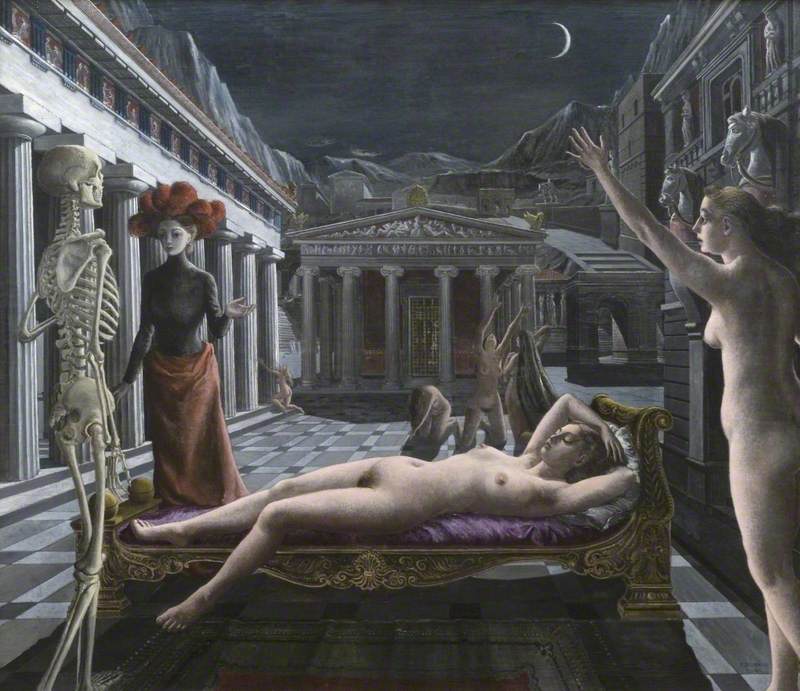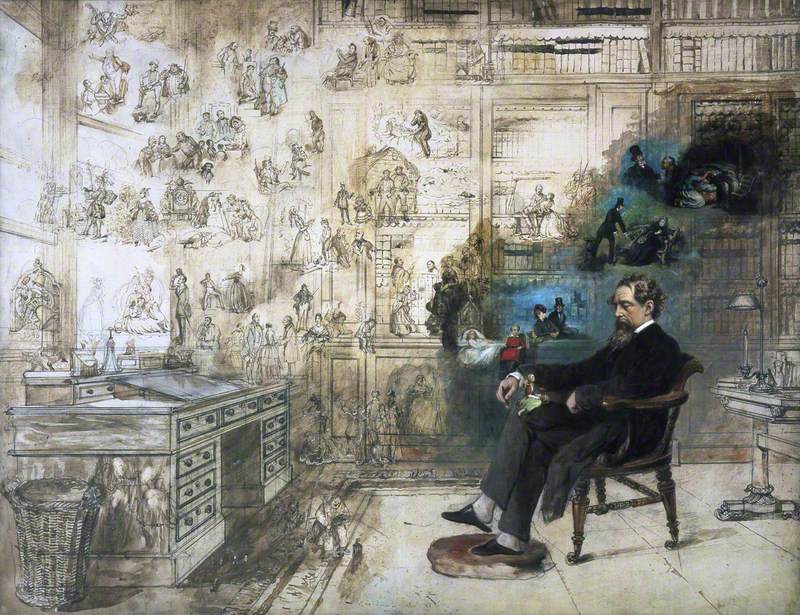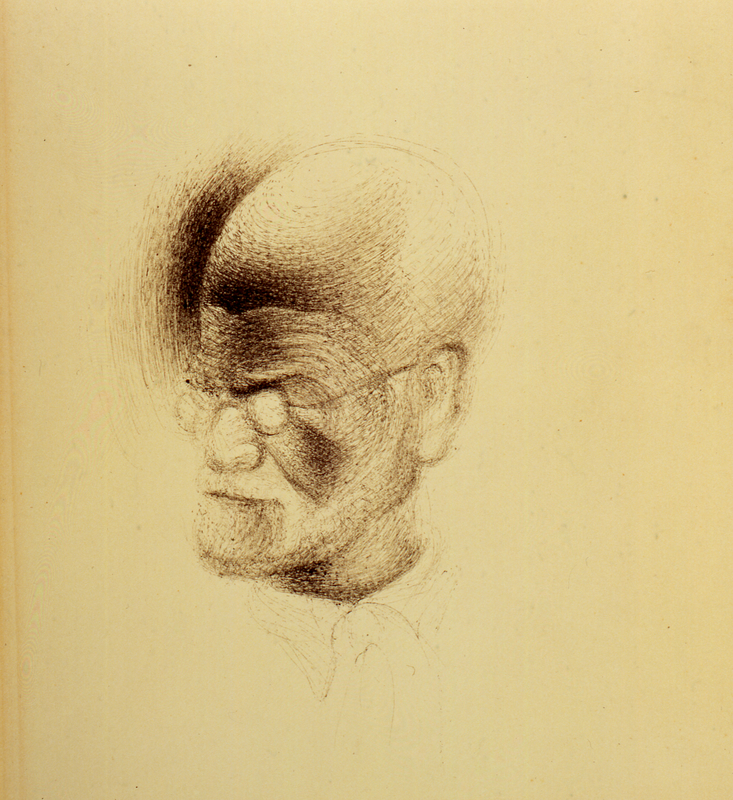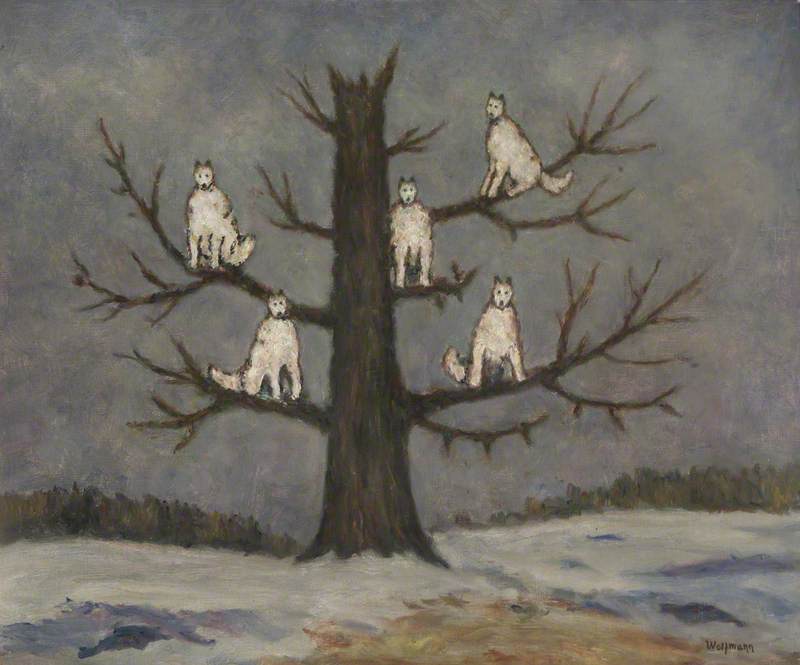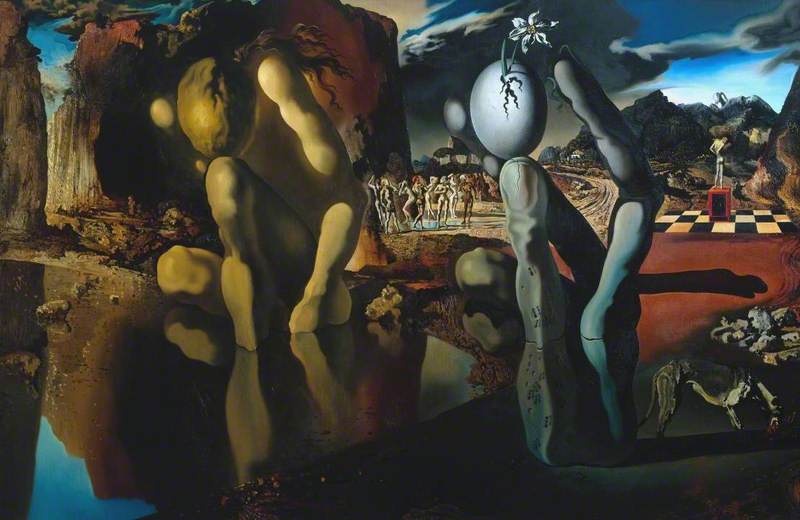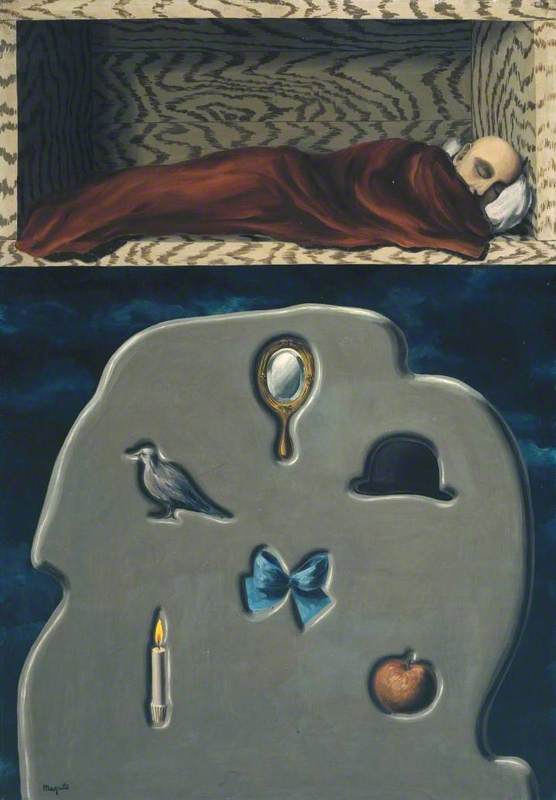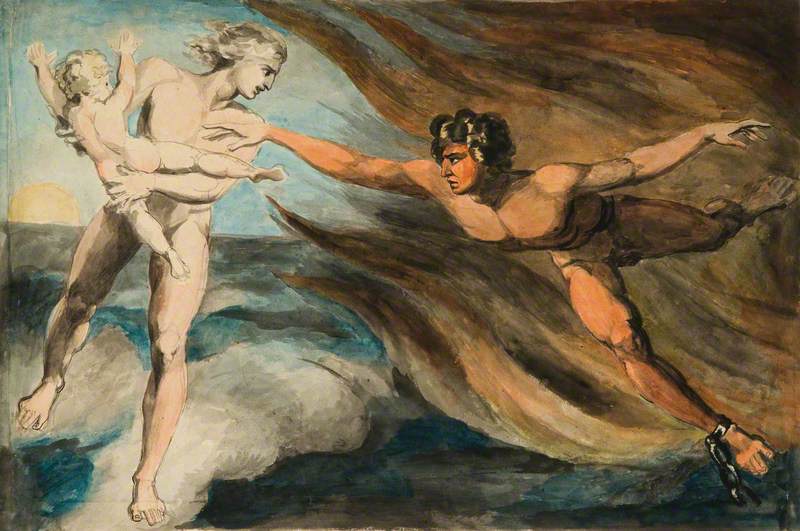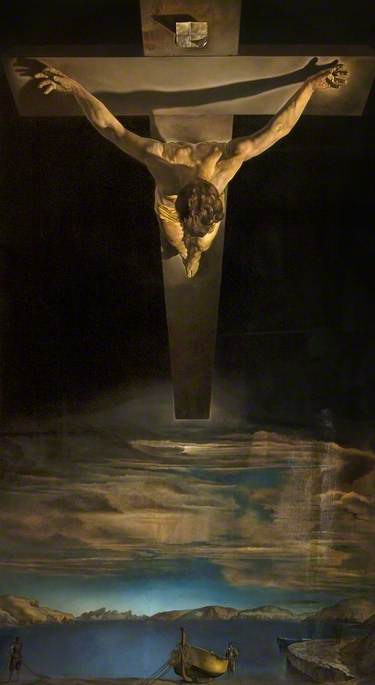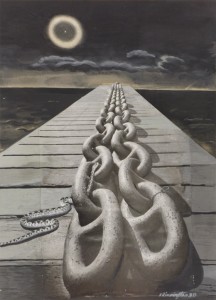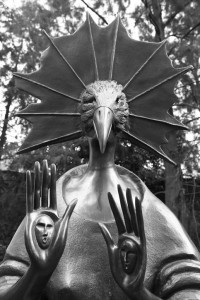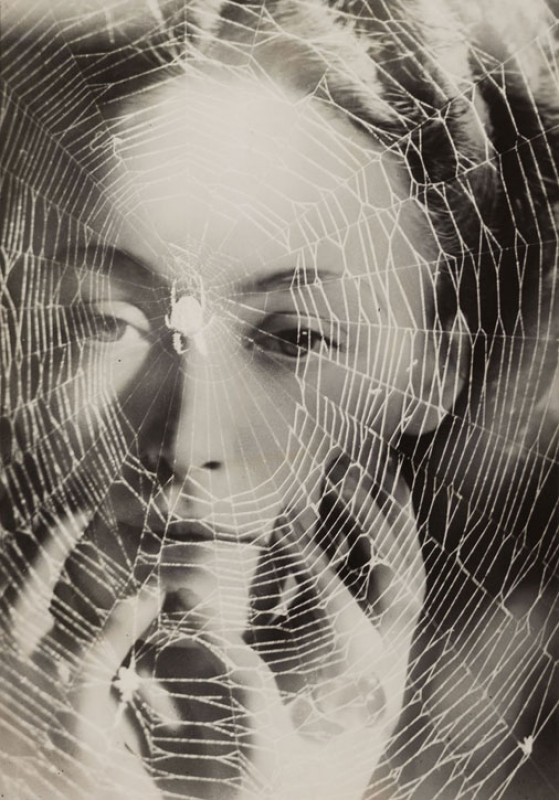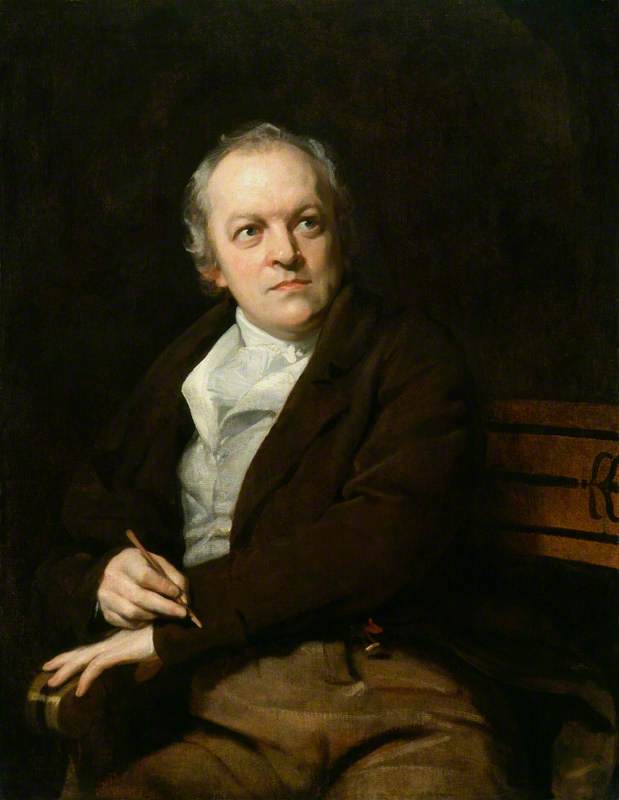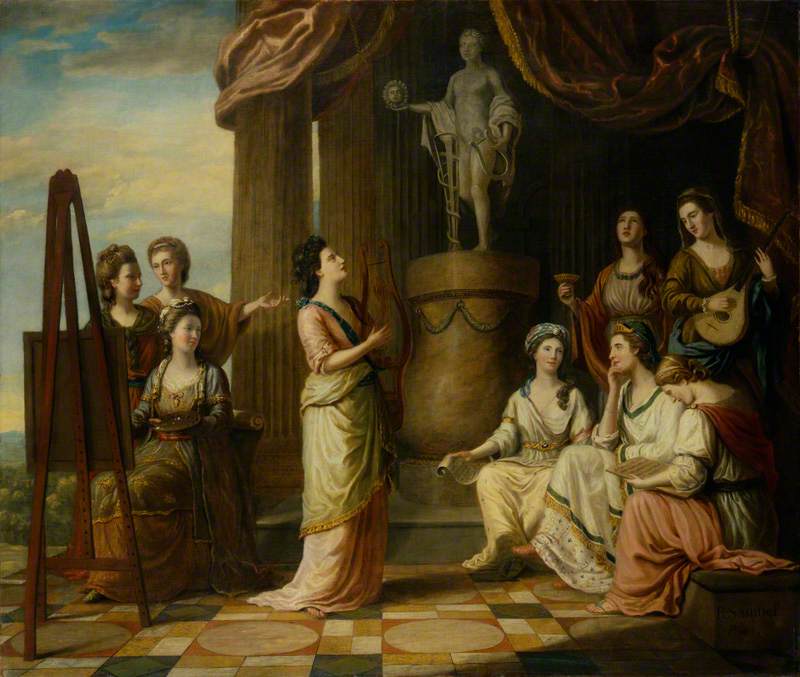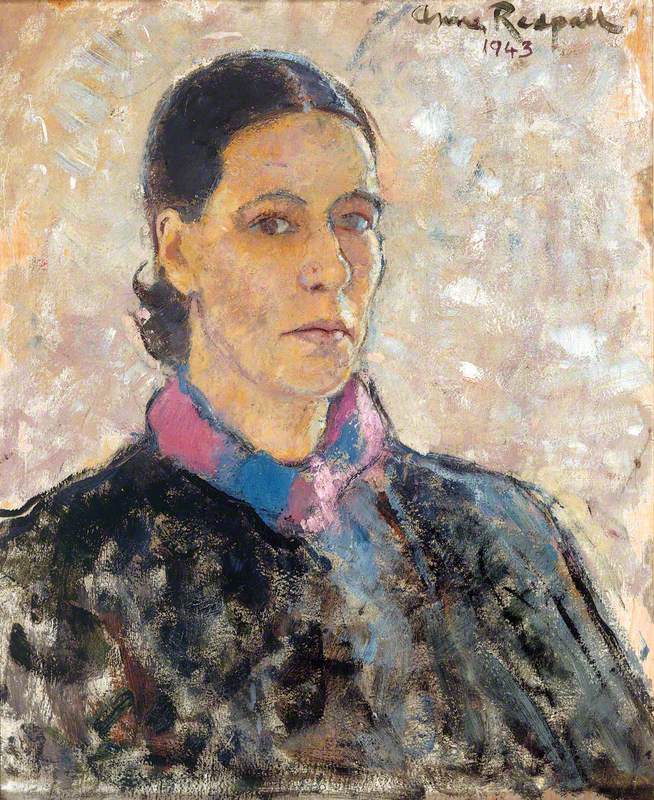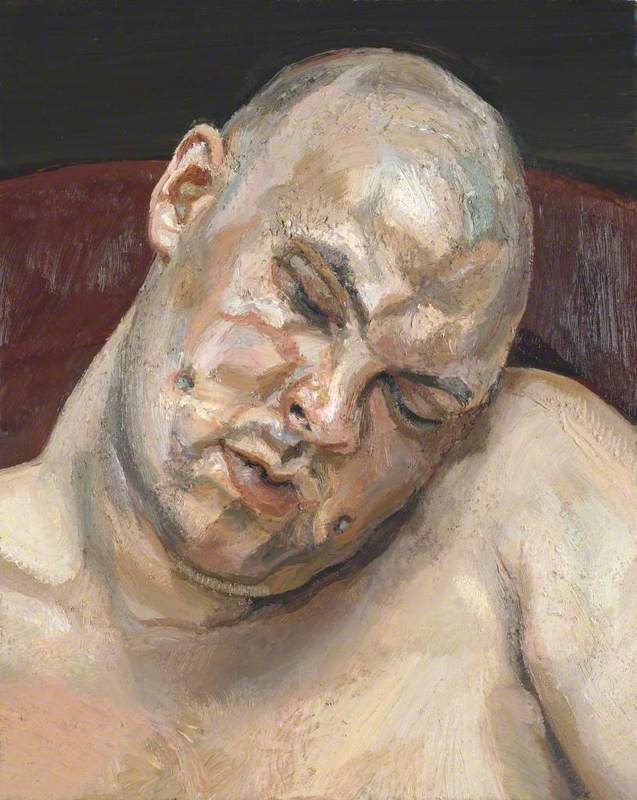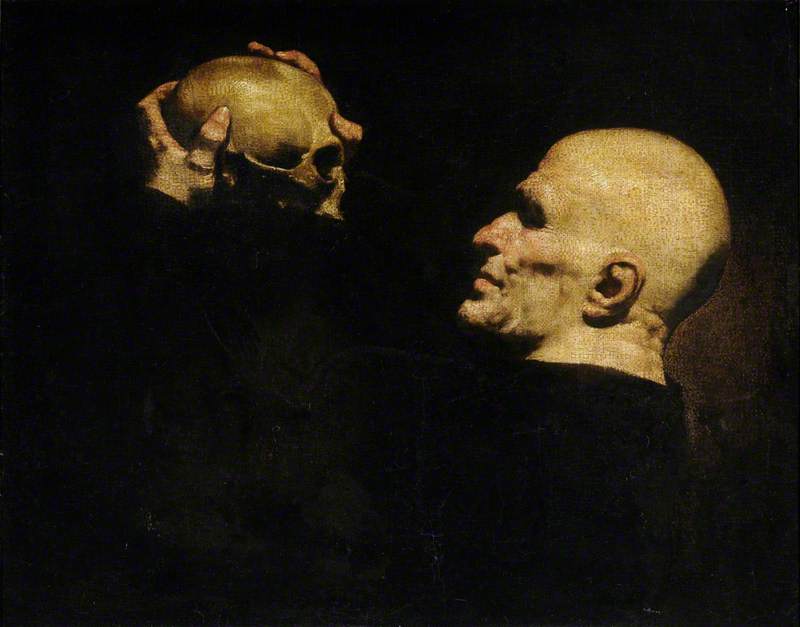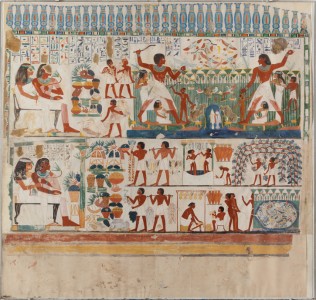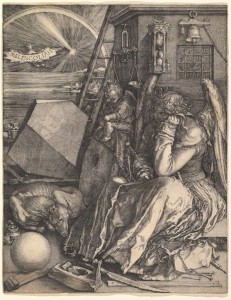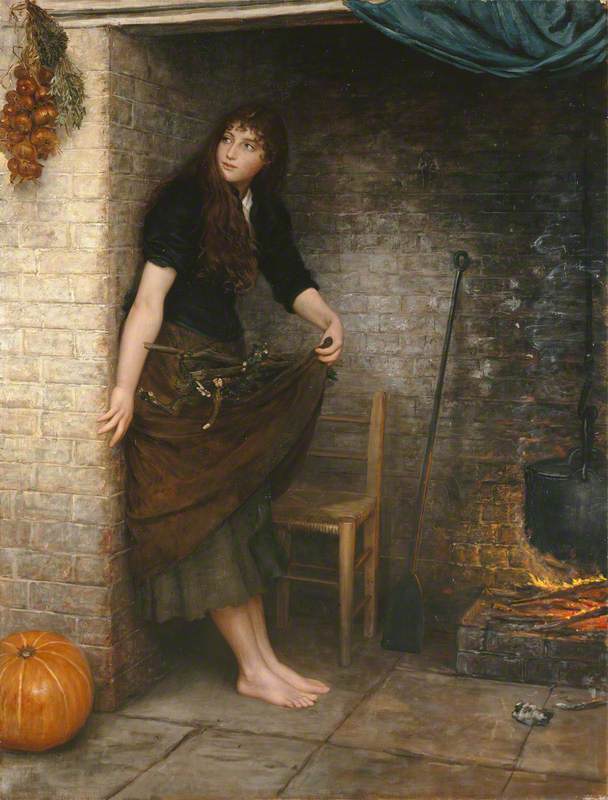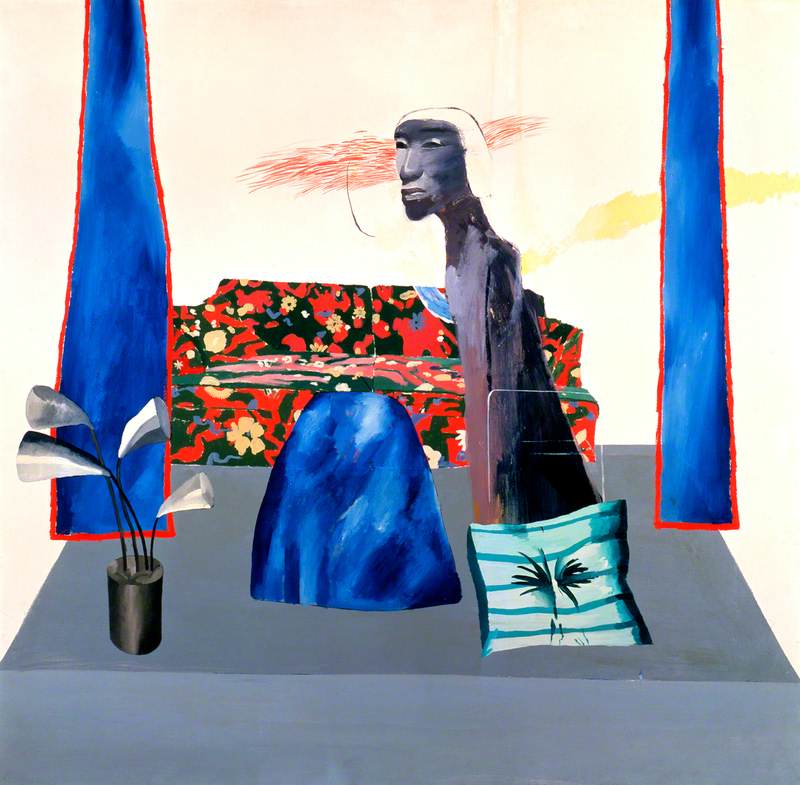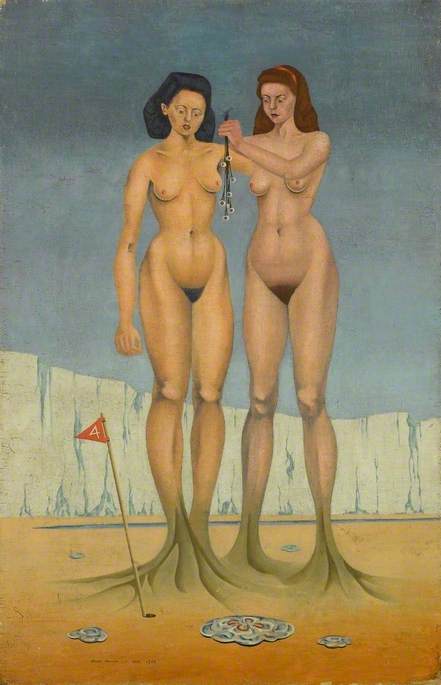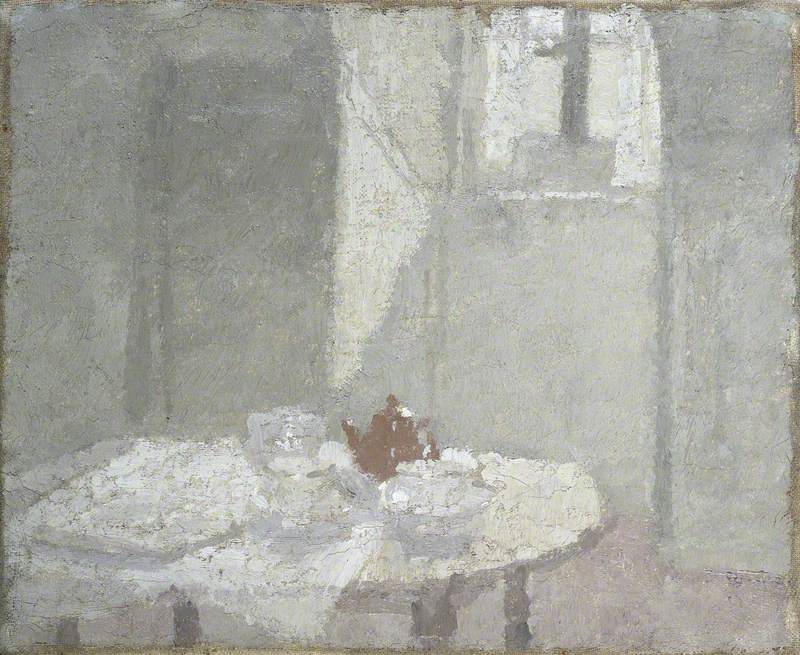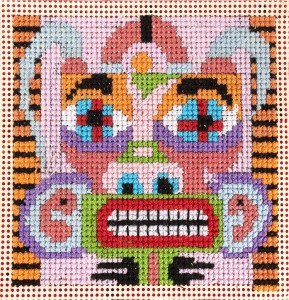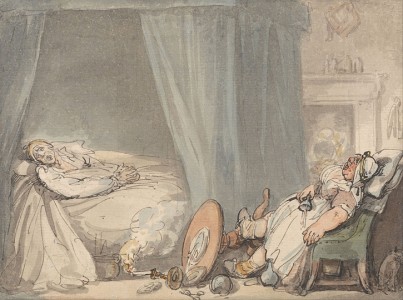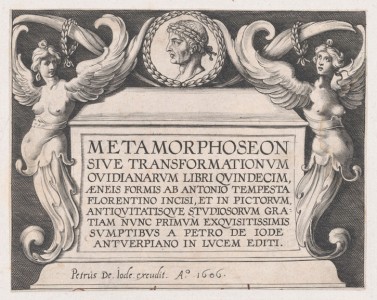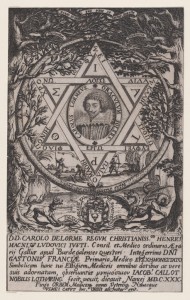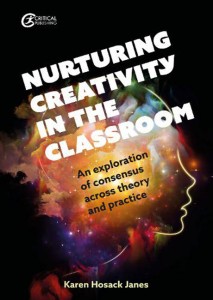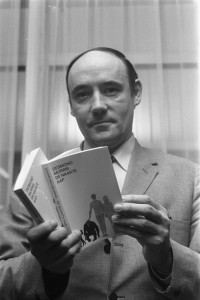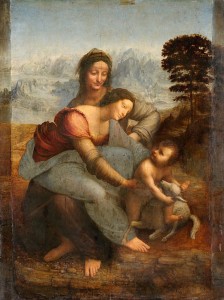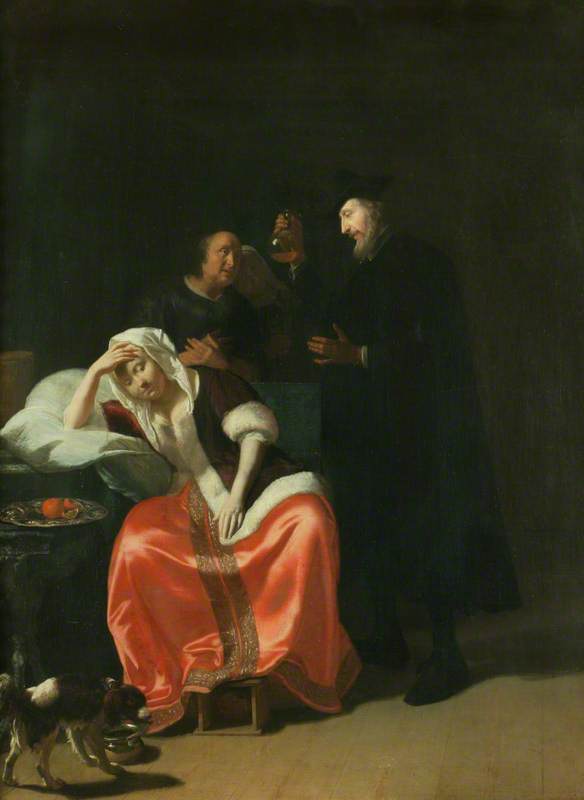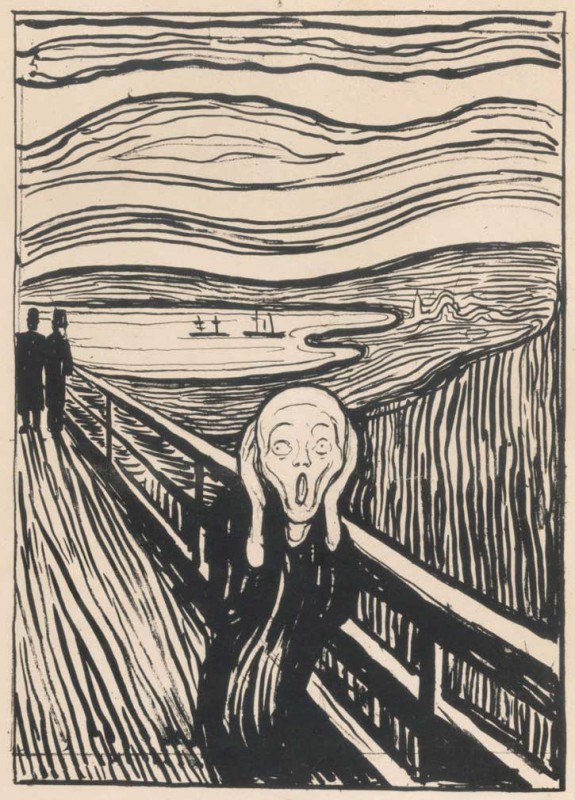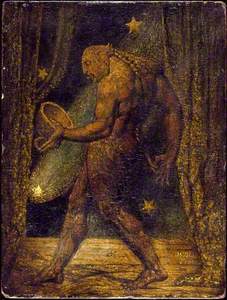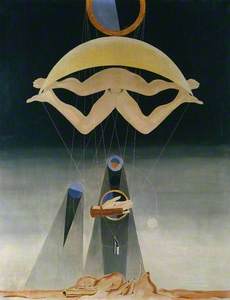By the end of our lives, it is estimated that most of us will have spent 50,000 hours dreaming.
That is six years spent amongst the night-time phantasms which disturb, delight and perplex us. Formed in our minds and yet alien to them, the dream's enduring mysteries have long captivated artists and writers.
For some, as the apotheosis of the unbridled imagination, the dream represents art's origins. As French philosopher Michel Foucault expressed it, 'every act of imagination points implicitly to the dream… the dream is the first condition of its possibility.' No artists, perhaps, without dreamers.
Detail from the Garden of Earthly Delights (left panel)
1500–1505, oil on oak by Hieronymus Bosch (c.1450–1516) 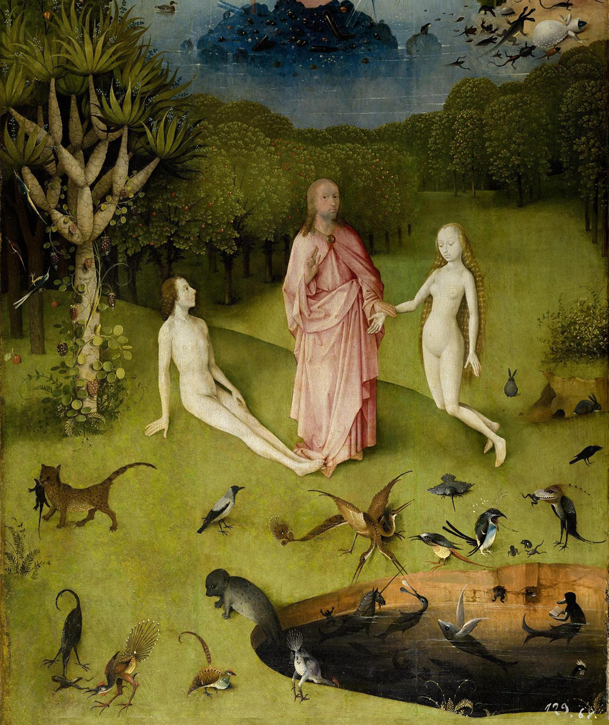
The boundless capacity shared by the dream and the artistic imagination was vividly summoned in the chimeras of the Netherlandish painter Hieronymus Bosch (c.1450–1516), in which humans morph with magnified molluscs and galivant beneath palatial vegetable life, as seen in the late fifteenth-century triptych The Garden of Earthly Delights.
Though dream depiction was common during the Renaissance, Bosch's wild embrace of nocturnal irrationality was remarkable for its time. Portrayals of biblical or legendary dreams were instead the model, with God's dictum delivered to sleeping saints. Shown in repose beneath the subject of their slumbering mind, these sleepers would wake to new moral understanding.
The Nightmare
1781, oil on canvas by Henry Fuseli (1741–1825) 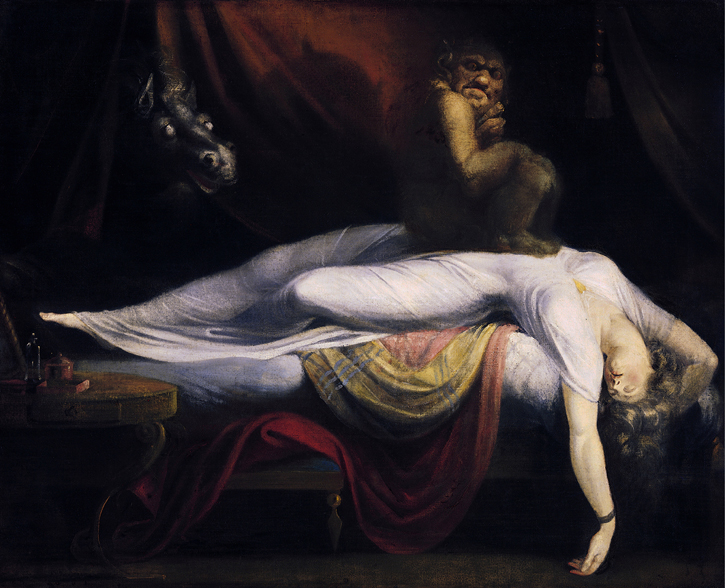
With time came the increasing secularisation of dreams, a shift seen in two of their best-known representations, made within 20 years of one another: Henry Fuseli's The Nightmare (1781) which enraptured audiences at the 1782 Royal Academy Exhibition, and Goya's print The Sleep of Reason Produces Monsters (1799, from his series 'Los Caprichos').
The sleep of reason produces monsters (no. 43) from 'Los Caprichos'
1799, etching and aquatint on paper by Francisco de Goya (1746–1828) 
Like their religious forebears, these sleepers are portrayed beneath their dreams. Yet these nightmares are neither prophetic nor divine, but instead insist upon their private and visionary nature.
This irrational subjectivity of dreaming was at the heart of eighteenth-century Romantic thought. Guests' dreams were the subject of conversation at the poet Samuel Taylor Coleridge's Thursday evening dinner parties, while the variety brought on through opium use was immortalised in works such as Coleridge's Kubla Khan (1816) and Thomas De Quincey's Confessions of an English Opium-Eater (1821).
The work of another Romantic, William Blake (1757–1827), is permeated by dreams and visions. Yet they were not only the subject of his work, but also influenced its form, for it was in a dream that his brother, following his death, revealed the pioneering printing method for which Blake would become renowned. This experience is perhaps reflected in Blake's depictions of John Milton and John Bunyan receiving dreamt poetic inspiration, seen in his watercolour illustrations for the nineteenth-century edition of Bunyan's The Pilgrim's Progress.
Marley's Ghost, from Charles Dickens' 'A Christmas Carol'
1843, hand-coloured etching by John Leech (1817–1864) 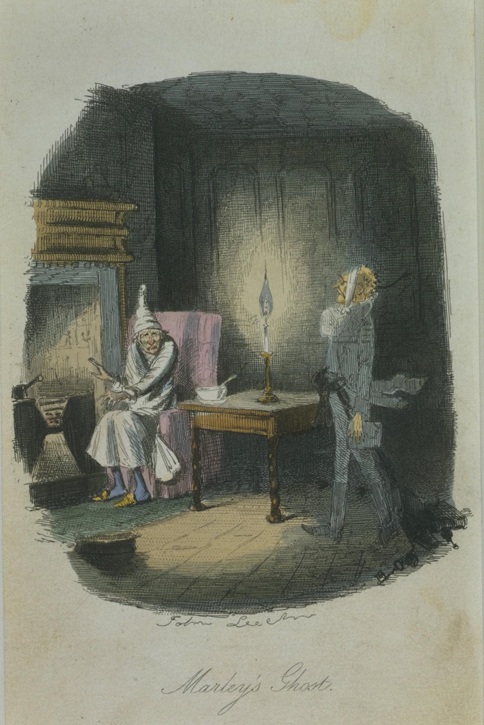
As the Victorians tutted into view, such rhapsody over the dream was restrained. Explosions in psychological enquiry saw nightly sojourns into absurd and dangerously immoral terrain discounted as the inconsequential refuse of minds disordered by physiological imbalances, such as indigestion.
Enter the cheese dream, a slice of which we see in Charles Dickens' A Christmas Carol (1843), as Ebenezer Scrooge declares of Marley's ghost: 'You may be an undigested bit of beef, a blot of mustard, a crumb of cheese, a fragment of an underdone potato. There's more of gravy than of grave about you, whatever you are!'
The consequences of heavy suppers found their greatest artistic expression in Dream of a Rarebit Fiend (1906). This early piece of cinema used the dream as the ideal device through which to exhibit the spectacular feats of the new medium, as the dreamer soars above the city after having gorged to excess on the titular dish.
Indeed, in its early days, cinema was frequently compared to the dream, with cinemas known as 'Dream Theatres', and Hollywood as the 'Dream Factory'.
Through the ages, dreams have acted as a mirror of their time's religion, rationality, or retreat into the absurd. Yet for over a century, Sigmund Freud's The Interpretation of Dreams (1900) has remained lodged in the western imagination, with art and literature following suit.
The novelty of Freud's theory was his belief in an unconscious – a vast psychological realm housing primal drives and desires which escaped in disguised form during sleep as the dream. For Freud, the dream operated on two levels: that of the manifest content (its imagery), and the masked latent dream-thoughts. Through the free association of dream interpretation, psychoanalysis sought to decode the manifest content and discover the meanings lurking below.
Sergei Pankejeff's boyhood dream of wolves seated in a tree led to Freud calling him 'Wolf Man' following an infamous interpretation of his dream as containing the repressed memory of his parents having sex. A painting of the dream by Pankejeff is housed in London's Freud Museum.
Freud's work was taken up most enthusiastically by the Surrealists, for whom dreaming represented total liberation from social, scientific and aesthetic strictures. Following the horror of the First World War, the dream was prized for its disruptive force as a challenge to the quotidian. In the 'First Surrealist Manifesto' (1924), the movement's founder André Breton (1896–1966) declared, 'I believe in the future resolution of these two states, dream and reality, which are seemingly so contradictory, into a kind of absolute reality, a surreality'. For the Surrealists, dream and reality existed on the same plane.
Artists such as Leonora Carrington (1917–2011), Max Ernst (1891–1976), René Magritte (1898–1967) and, perhaps most famously, Salvador Dalí (1904–1989) painted from within the dreamworld, revelling in its nonsensical, erotic and eerie resonances. They had, thought Freud, rather missed the point. A meeting between Freud and Dalí in 1938 left the former perplexed – though it also left us an exquisite portrait of the master by the acolyte.
Freud was not, he felt, 'destined to understand' Surrealism. A letter sent to Breton stated the problem plainly: 'I ask you to note that the interpretation of what I call the manifest dream has no interest for me... I can hardly imagine what it would mean to anyone.' Quite the rebuke from one who felt himself unwillingly designated the group's 'patron saint'.
Undeterred, Dalí would go on to craft the dream in three dimensions in Alfred Hitchcock's Spellbound (1945), a thriller centring on the attempts of a psychoanalyst to unearth her amnesiac lover's repressed psycho-history. It is Dalí's dreamscape, featuring a masked face strikingly similar to Magritte's veiled faces in The Lovers (1928), which provides the clues she needs to solve the puzzle.
A century on, and painters continue to work in this tradition of the chance associations and curious imagery of the dream. The pregnant atmospheres of Gabriella Boyd's paintings, in which humans and their traces hover in tension with illusory spaces, illustrated a 2015 Folio Society edition of The Interpretation of Dreams. Mary Stephenson's canvases see figures emerging from dark voids engaged in delirious acrobatics, often contrasted with the stillness of sleeping figures from whose imaginations they seem to spring.
Overflow
2020, oil on canvas by Mary Stephenson 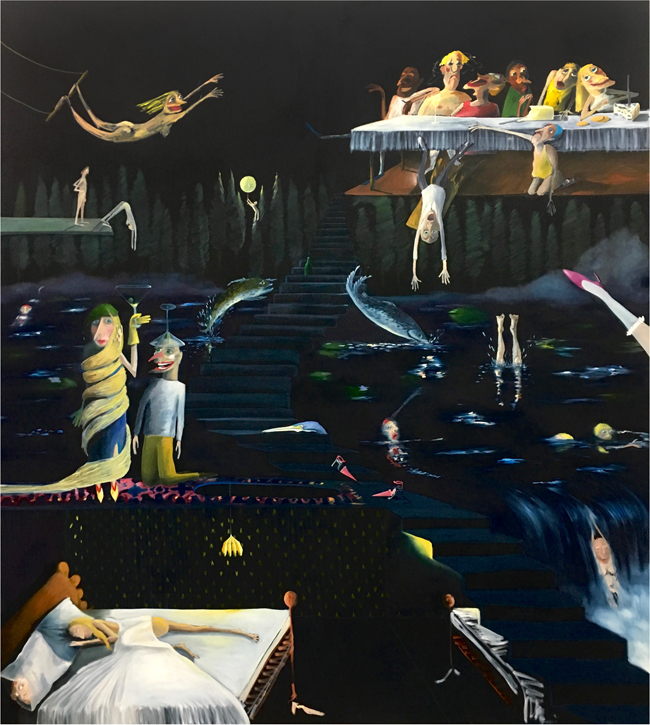
It is often said that there is nothing duller than to be told someone else's dreams. Yet throughout history, artists have shown that to meet the dreamworld in artistic form is quite the reverse – a source of visual splendour, through which our waking world is seen anew.
Chloe Nahum, PhD candidate at the University of Oxford
Further reading
Sigmund Freud, translated by James Strachey, The Standard Edition of the Complete Psychological Works of Sigmund Freud, Volumes IV and V, Vintage Books, 2001
Helen Groth and Natalya Lusty, Dreams and Modernity, Routledge, 2013
Laura Marcus, Dreams of Modernity: Psychoanalysis, Literature, Cinema, Cambridge University Press, 2014
Anthony Stevens, Private Myths: Dreams and Dreaming, Harvard University Press, 1995
